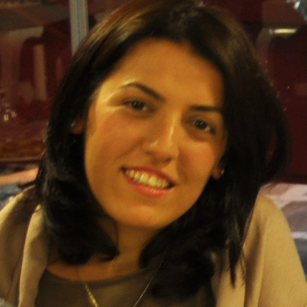Research Articles
Reviews
Review
Issue Reviewers

 0000-0002-1367-7550
0000-0002-1367-7550





 0000-0002-3092-7128
0000-0002-3092-7128
Aim & Scope
The aim of the journal is to create a common academic platform in different disciplines in Fine Arts and Design.
Thirty-seven accepts articles on the subjects: Art and Design journal, PLASTIC ARTS, PHONETIC ARTS, GRAPHIC DESIGN, PERFORMANCE ARTS, VISUAL COMMUNICATION DESIGN, ART EDUCATION, ART HISTORY, CONSERVATION and RESTORATION of ARTWORKS, INTERIOR ARCHITECTURE, ART PHILOSOPHY and SOCIOLOGY, TRADITIONAL TURKISH ARTS and INDUSTRY, apart from these topics research studies on art and design, which have been prepared by using appropriate research, methods and models specific to the field and have the quality of making a contribution to the field; and research, biography and compilation articles in which a concept or theory is discussed, criticized or explained, and translation studies that contribute to the scientific field.
Writing Rules
All original and scientific articles related to the content of the journal are included in the journal as a result of the evaluations of the referee committee.
The language of writing are Turkish and English. Spelling, punctuation and abbreviations are based on the latest edition of the Turkish Language Association Spelling Guide.
Submitted articles must be clear and understandable, in accordance with scientific criteria in terms of language and expression. Manuscripts submitted for publication should not exceed approximately 8,000 words, including abstracts and bibliography, except in exceptional circumstance. The graphics used in the article should be sent in a graphic format that can be opened in Windows, and the photographs should be sent in JPG format and with a resolution of 300 pixels. The originals of the documents and photographs related to the subject of the article or the ones suitable for printing should be selected. The name of the author(s) should be stated under the photograph and on the edge of the figure. Articles with a high rate of errors in terms of grammar and expression will not be evaluated. In languages using the Latin alphabet, the name should be given in its original form. Names written in other languages should be used with English or Turkish transliteration.
Format:
1. There should be 2.5 cm spacing from the right, left, bottom and top of the page.
2. In the main parts of the article, the font should be Times New Roman, font size 11, line spacing 1.5 and justified.
3. Paragraphs should be started with a tab (1.25 cm) inside.
4. In block citations, the entire citation must be in one tab (1.25 cm). When the citation is finished, it should not be forgotten to cite the source (Source, year, page number).
The text is divided into sections in APA style. The main sections are as follows:
Title Abstract/Abstract
Introduction
Method
Conclusions
Discussion
References
Title:
1. It is on the first page. First, the full name of the text is written in a centered manner, with only the first letters capitalized. The name of the author/s is added in the same way on a bottom line. Finally, the institutions of the author(s) are written in the same writing style. Detailed information of the author(s) (*) should be shown at the bottom of the page with footnotes.
2. After going to the bottom with two enters, the names and orcid numbers of the author(s) should be specified in left-justified (from the average)
Essence [Abstract]:
In articles written in Turkish, a Turkish abstract consisting of 150-300 words (Calibri 9 points) should be at the beginning of the article, and in articles written in English, an English abstract consisting of 150-300 words should be placed at the beginning of the article. In Turkish and English, whichever is the written language of the article, the abstract in that language should be added first, and then the abstract in the other language should be added. In addition, at least 3 English and 3 Turkish keywords should be included for the article, and keywords should be written inside a tab (I cm). Sub-headings that should be included in the abstract:
Example for Abstract:
o Introduction and Purpose of the Study: In the introduction and aim of the study, clear information should be given to the reader about which question the study seeks to answer, which research question(s) is based on, and why this study is necessary.
o Conceptual/Theoretical Framework (Literature Review Background): In a conceptual or theoretical framework, studies that are directly related to the subject and purpose of the study should be summarized and it should be clearly stated why the work done/current work is important/meaningful in this sense, what gap it will fill, and what additional contribution it can provide. should be explained.
o Method: In the method part of the study, the basic approach used for the research, the population, the sample, the data collection method and tool, the scales and why they were preferred should also be included.
o Results: The results or findings obtained in the analysis of the data or conceptual studies should be discussed in relation to the conceptual theoretical framework, and evaluations should be made regarding the similarities and differences and their reasons.
o Conclusion: In this section, depending on the concluded research findings, important issues that are associated with the conceptual/theoretical framework and that are or are thought to contribute to the relevant writing should be included. After mentioning the expected benefits of the study, suggestions should be written to practitioners and/or researchers.
Search Titles:
l. Level: Centered, Bold, Initials Capitalized The rest is Small
2. Level: Left justified, Bold, Initials Capitalized Rest Small
3. Level: One tab in, Bold, Only the first letter of the title is capitalized, the rest is lowercase, with a dot at the end.
4. Level: One tab in, Bold, Italic, Only the first letter of the title is capitalized, the rest is lowercase, there is a period at the end.
5. Level: One paragraph in, Italic, Only the first letter of the title is capitalized, the rest is lowercase, with a period at the end,
Tables, Graphics, Figures and Pictures:
1. Table, graphic, figure and picture names should be placed under the table. Figure, picture, graphic and table texts and figures should be written in 8 points.
2. Figures, pictures, graphics and tables should be numbered.
3. Line spacing should be set as I for texts in tables and figures, and vertical lines should not be used in tables.
Principles Regarding Writing References and References in the Text:
Type of citation
First reference to the work in the text
other references to the same work in the text
First reference to the work in the text in parentheses format
Other references to the same work in the text in parentheses
One author:
Öztaş (2014),
Öztaş (2014)
(Öztaş, 2014, p. 9)
(Öztaş, 2014, p. 9)
with two authors: Erdem and Öztaş (2015)/ (Erdem & Öztaş, 2015, p. 8) /(Erdem & Öztaş, 2015, p. 8)
Three authors:
Altun, Şahin and Öztaş (2017)
Altun et al. (2017) (Altun, Şahin, & Öztaş, 2017. p. 5)
(Altun et al., 2017, p. 5)
Four authors:
Musso, Weare, Öztaş, and Loges (2006)
Musso et al. (2006 (Musso, Weare, Öztaş, & Loges, 2006, p. 4-7)
(Musso et al., 2006, p. 4-7)
Five authors:
Öztaş, Myrtle, Chen, Masri and Nigbor (2002)
Öztaş et al. (2002) (Öztaş, Myrtle, Chen, Masri, & Nigbor, 2002, p. 8)
(Öztaş et al., 2002, p. 8)
Six or more authors
Öztaş et al. (2005)
Öztaş et al. (2005)
(Öztaş et al., 2005, p. 7)
(Öztaş et al., 2005, p. 7)
Author groups (abbreviated) Kastamonu University (KÜ, 2018)
KU (2018) (Kastamonu University [KU], 2018,p, 11)
(KÜ, 2018, p. 11)
Author groups (without abbreviation)
Kastamonu University (2018) Kastamonu University (2018)
(Kastamonu University, 2018, p. 6)
(Kastamonu University, 2018, p. 6)
If more than one work is cited in the same parentheses, the first to be written in the bibliography is written first.
If two or more works by the same author are cited, the letters following the alphabetical order are added to the publication year: For example: (Arıkan, 2009a); (Arikan, 2009b). The first of these refers to two separate works in the bibliography.
If the author of the work is not specified, the first few words of the name of the work are used when quoting. When referring to such a work, the title of the book is italicized and followed by the date:
As stated in another source (General business, 2017). . . As stated in the General Entity (2017)...
If more than one author with the same surname is referenced, the names of the authors should also be stated in the sentence, even if the publication years of the works are different. For example: Mehmet Unal Şahin (2015); Muzaffer Şahin (2010).
Personal interviews should be mentioned in the text but not in the bibliography. For example: (Adnan Duygun, personal interview, February 2017). It is essential to reach primary sources in studies, but if they could not be reached due to some difficulties, the cited or cited source is indicated in the reference. For example: (cited by Çelikbilek, 2016, p. 25); (as cited in Karaca, 2017, p. 32). The source information in the cited or transferred work is not included.
Principles to be Followed in Bibliography:
1 The full identity of the cited source will be given. Works that are not cited cannot be shown in the bibliography.
2. Whenever possible, reference should be made to the last edition of the work.
3. If available, the page numbers of the article and the volume number of the issue should be included.
4. If the DOI number is available, it should be added to the last part of the reference.
A. Books:
In the "bibliography", the surname of the author, the initials of the first name (sometimes the first two names), the year of publication (in parentheses), the name of the work, the publication information, are written separately with dots. The titles of the books are written after the first letter of the title. (except for proper names) are written entirely in lowercase and italic letters.
a. Book with one author or editor:
Author's Surname, Author's Initials. (Year). The title of the book is in italics and all lowercase after the first letter (except for proper names). Place of Publication: Publisher.
For example: AYKAÇ, B. (1999). Human Resources Management and Strategic Planning of Human Resources. Ankara: Nobel Publishing House. Editor's Surname, Editor's Initials. (Ed.). (Year). The title of the book is in italics and all lowercase after the first letter (except for proper names). Place of Print: Publisher.
For example: GÜMÜŞ, İ. (Ed.). (2017). General business. Istanbul: Istanbul Gelisim University Publications
b. Book with two or more authors or editors:
First Author's Surname, First Author's Initials and Second Author's Surname, Second Author's Initials. (Year). The title of the book is in italics and all lowercase after the first letter (except for proper names). Location: Publisher.
For example: KÖTEN, E, ERDOĞAN, B. (2014). Disabled youth, social exclusion and the internet. İstanbul: İstanbul Gelişim University Publications
First Author's Surname, First Author's Initials, Second Author's Surname, Second Author's Initials and Third Author's Surname, Third Author's Initials. (Year). The title of the book is in italics and all lowercase after the first letter (except for proper names). Place: Publisher
For example: KARACA, RK ÖZKURT, FZ (2017). New concepts and new conflicts in global security issues. Istanbul: Istanbul Gelisim University Publications
c. Revised or expanded editions:
Author's Surname, Author's Initials. (Year). The title of the book is in italics and after the first letter (except for proper names) in all lowercase (Revised/enlarged x, edition). Place of Publication: Publisher.
For example: ALPAY, N. (2004). English issues guide (2nd revised edition). Istanbul: Metis.
d. Books by unknown author:
The title of the book is italicized and completely lowercase after the first letter (except for proper names). (Year). Location: Publisher. For example: The 1995 NEA almanac of/higher education. (1995). Washington DC: National Education Association.
D. Books in two or more volumes:
Author's Surname, Author's Initials. (Year). The title of the book is in italics and after the first letter (except for proper names) in all lowercase (volume x). Place of Publication: Publisher.
For example: TINMAZ, H. (2015). Proceedings of the 2013 symposium on barrier-free informatics (volume 2). Istanbul: Istanbul Gelisim University Publications
Translated books:
Author's Surname, Author's Initials. (Year). The title of the book is in italics and all lowercase after the first letter (except for proper names). (First Letters of Translator's Name. Translator's Surname, Trans.) Publishing Place: Publisher.
For example: LUECKE, R. (2008). Entrepreneur's handbook. (Ü. Şensoy, Trans.) İstanbul: Türkiye İş Bankası Cultural Publications.
f. Text in a compiled book:
Author's Surname, Author's Initials. (Year). The title of the article. The title of the book is in italics and after the first letter (except for proper names) in all lowercase (pp. page number range). Place of Publication: Publisher.
For example: SAYAN, S. (2002). World Economy and Turkey: Globalization, Liberalization and Crisis. Sustainable development of local economies and the example of Çanakkale (p. 33). Ankara: Turkish Economic Institution.
g. Chapter or article in reference books:
Author's Surname, Author's Initials. (Year), Title of the article. The title of the book is italicized and after the first letter (except for proper names) in all lowercase (pp. page number range), Publication Place: Publisher.
For example: TOY, H. , ELMACI, D. (2015). Proclamation of the Republic. Chronological encyclopedia of Turkish history (pp. 6-9). Istanbul: Mixed Books.
B. Articles:
For Journal Articles:
Author's Surname, Author's Initials. (Year, month if applicable). Only the first letter of the first word of the article is capitalized, the rest is lowercase if not a proper noun. Name of Journal Italic and First Letter of Each Word Capitalized, Volume Italic (Issue), Page Number Range. doi: xxxxxx
For example: SELEOĞLU, D., YİĞİT, İ. (2021, December). Differentiating role of organizational citizenship behavior in the relationship between psychological contract and organizational performance: A research on education-related non-governmental organizations. Kastamonu University Journal of the Faculty of Economics and Administrative Sciences, Vol. 23 (2), 49-85. doi: iibfdkastamonu.990100
C. Other Resources:
a. Film
Director's Surname, Director's Initials. (Director). (Year), Movie title in italics. Production city: Production company name.
For example: TYLDUM, M. (Director). (2014). The Imitation Game. USA: Black Bear Pictures.
b. Internet Resources:
Author's Surname, Author's Initials. (The publication date of the article). The title of the article is italicized, only the first letter of the first word is capitalized, the rest is lowercase if not a proper noun. Access date: Day Month Year, link to the article.
For example: Higher Education Council (YÖK). (10.01.2018). Opportunity for academics abroad. Access date: 15.01.2018, hitps:/hi '110.1'.cnnturk.com/turkive/akademisyen lere-vırt- female-imkan
c. Unpublished Master's/PhD Theses:
Author's Surname, Author's Initials, (Year). The title of the thesis is italicized, only the first letter of the first word is capitalized, the rest is lowercase if not a proper noun (Unpublished Master's/PhD Thesis). Name of Institution, Location of Institution.
For example: SELİMLER, H. (2006). Liquidation of non-performing loans by asset management companies in Turkish banking sector, selected countries and Turkey practice (Unpublished Doctoral Thesis). Marmara University Banking and Insurance Institute, Istanbul.
Ethical Principles and Publication Policy
The publication processes and peer-reviewed studies implemented in the Thirty-seven Journal of Art and Design are studies that embody and support the scientific method. At this point, it is important that all stakeholders of the process (authors, readers and researchers, publisher, referees and editors) comply with the standards for ethical principles. No fee is charged from the authors in the application, refereeing and publishing processes of the publications.
Articles submitted for publication to Thirty-seven Art and Design Journal are subject to double-blind peer review by at least two referees. The article evaluation process takes an average of 15-30 days. In addition, it is confirmed that the articles have not been published before and do not contain plagiarism, through the iThenticate or Turnitin program used for plagiarism detection. Articles with a similarity rate of 15% (excluding references) are not included in the publication process. Studies with plagiarism are rejected by Kastamonu University Faculty of Fine Arts and Design Thirty-seven Art and Design Journal Editorial.
OAll stakeholders are expected to bear the following ethical responsibilities within the scope of the publication ethics of Tuzyedi Journal of Art and Design. The ethical duties and responsibilities listed below have been prepared as open access, taking into account the guidelines and policies published by the Committee on Publication Ethics (COPE). For detailed information, please visit https://publicationethics.org/guidance/Flowcharts.
Price Policy
Dergide yayımlanan yazıların, telif hakkı dergiye aittir. Yazar/lar, dergide yayımlanmasına onay verilen yazısının her türlü telif hakkını devretmiş olduğunu kabul eder. Yazarlardan hiçbir aşamada ve herhangi bir ad altında ücret talep edilmeyecektir. Dergimizde makale işleme ücreti (APCs) bulunmamaktadır.
Sayın Yazarlar,
Dergimize makale gönderirken lütfen çalışmanızı makale şablonuna göre düzenleyiniz ve şablon üzerinde biçimsel değişiklik yapmayınız. Makale şablonunu indirmek için tıklayınız.

